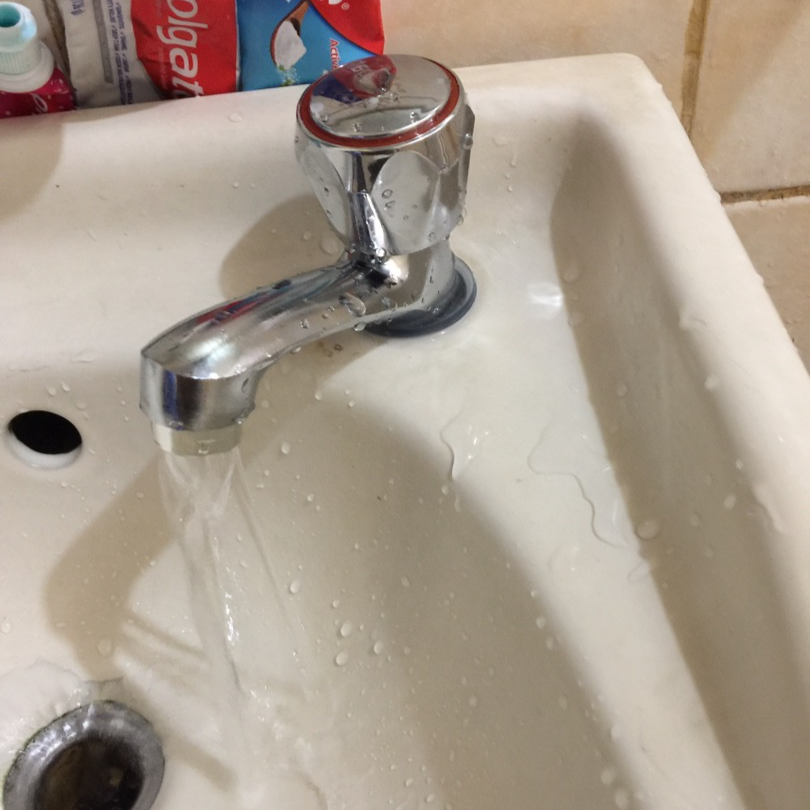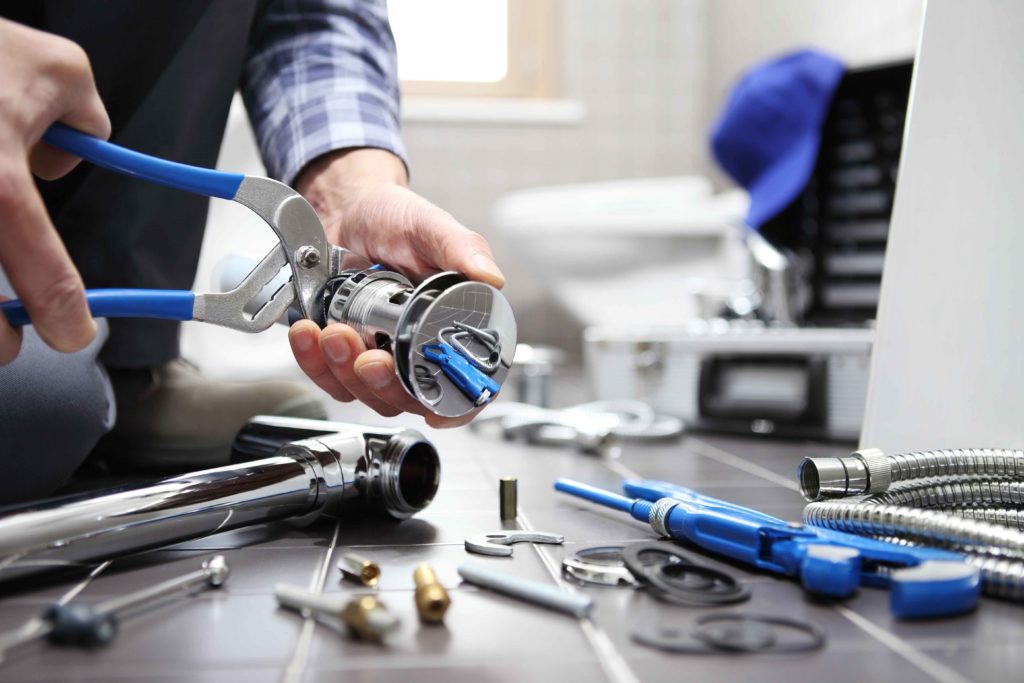When It's Required to Correct a Faulty Faucet
When It's Required to Correct a Faulty Faucet
Blog Article
How do you feel about Why Are My Faucets Dripping (And Can I Fix It Myself)??

Leaking taps might feel like a minor aggravation, however their influence goes beyond just the aggravation of the sound. From drainage to sustaining unnecessary monetary costs and health and wellness threats, disregarding a trickling faucet can result in different consequences. In this short article, we'll look into why it's crucial to address this usual household problem immediately and efficiently.
Waste of Water
Ecological Influence
Dripping faucets contribute substantially to water wastefulness. According to the Environmental Protection Agency (EPA), a single tap trickling at one drip per secondly can waste more than 3,000 gallons of water annually. This not just stress water sources yet additionally affects communities and wild animals based on them.
Step-by-Step Overview to Dealing With a Dripping Faucet
Tools Required
Prior to trying to fix a dripping faucet, gather the necessary tools, including an adjustable wrench, screwdrivers, replacement parts (such as washers or cartridges), and plumber's tape.
Common Tap Issues and Their Solutions
Recognize the sort of tap and the details concern creating the drip. Usual troubles consist of damaged washing machines, corroded valve seats, or damaged O-rings. Describe supplier guidelines or on-line tutorials for detailed support on repair services.
Financial Expenses
Enhanced Water Bills
Past the environmental influence, trickling faucets can inflate water costs significantly. The gathered waste in time translates into higher utility expenses, which could have been avoided with prompt fixings.
Possible Residential Or Commercial Property Damage
In addition, long term leaking can result in harm to components and surfaces surrounding the faucet. Water buildup can create staining, corrosion, and also structural problems if left neglected, leading to additional fixing expenses.
Health Problems
Mold And Mildew and Mildew Development
The constant visibility of wetness from a trickling faucet develops a suitable environment for mold and mildew and mildew development. These fungi not only endanger indoor air top quality but additionally posture health and wellness risks, especially for people with breathing problems or allergies.
Waterborne Illness
Stationary water in dripping taps can come to be a breeding ground for germs and other virus, enhancing the danger of waterborne conditions. Contaminants such as Legionella germs grow in stagnant water, potentially bring about serious diseases when consumed or breathed in.
Do it yourself vs. Specialist Repair work
Benefits and drawbacks of DIY Repair Work
While some may try to deal with a dripping faucet themselves, DIY repair work include their very own collection of obstacles. Without proper understanding and tools, do it yourself efforts can aggravate the concern or lead to incomplete repair work, extending the issue.
Benefits of Hiring a Professional Plumber
Employing an expert plumber makes sure that the underlying root cause of the trickling tap is attended to properly. Plumbing professionals have the expertise and equipment to identify and repair faucet issues efficiently, saving time and minimizing the threat of more damages.
Environmental Responsibility
Individual Payment to Preservation
Taking responsibility for repairing dripping taps lines up with wider efforts towards water preservation and environmental sustainability. Every individual's activities jointly make a considerable impact on protecting precious sources.
Sustainable Living Practices
By prioritizing punctual repair services and embracing water-saving habits, people contribute to sustainable living methods that benefit both existing and future generations.
Preventive Measures
Routine Maintenance Tips
To stop leaking taps, do routine maintenance such as cleaning aerators, evaluating for leaks, and changing worn-out components promptly. In addition, consider mounting water-saving devices or updating to much more reliable fixtures.
Relevance of Prompt Repair Works
Addressing trickling faucets as soon as they're observed avoids more water wastefulness and possible damages, eventually saving both water and cash in the long run.
Influence On Building Value
Perception of Well-Maintained Residential Or Commercial Property
Maintaining a residential property in good condition, consisting of dealing with maintenance problems like trickling faucets, enhances its perceived value and worth amongst prospective buyers or occupants.
Influence on Resale Worth
Characteristics with properly maintained plumbing components, including faucets, command higher resale values in the realty market. Resolving trickling taps can contribute to a positive impression throughout residential or commercial property assessments and arrangements.
Verdict
Addressing a dripping faucet goes beyond mere benefit; it's a vital step toward conserving water, decreasing financial costs, and protecting health and wellness and residential property. Whether via do it yourself repair services or expert help, acting to fix dripping taps is a little yet impactful method to promote responsible stewardship of sources and add to a much healthier, a lot more sustainable future.
How to Fix a Dripping or Leaky Faucet
A leaking faucet is one of the most common problems that homeowners encounter, but it being commonplace doesn’t make it any less annoying. The constant drip drip drip of a leaking bathtub faucet, showerhead, or sink tap can disturb your home’s serenity. Left neglected, a dripping faucet can also result in higher water bills and discoloration or mold growth in your sink or plumbing fixtures.
Fortunately, you don’t have to be a trained plumber to know how to stop a dripping faucet. With some basic tools, replacement parts, and a little patience, leaky faucet repair is a breeze. In this article, we’ll explain what causes dripping faucets and how you can fix them.
What Causes a Leaking Faucet?
Kitchen and bathroom faucets come in all manner of designs, but most involve some combination of valves, O-rings, seals, and washers. The O-ring is usually the weakest link, but any one of these pieces can wear down over time. Heat, moisture, temperature fluctuations, minerals, mold, and movement can contribute to warping and corrosion, breaking the watertight seal. This just comes with the territory of being a homeowner. Everything is always subject to wear and tear, and some component parts of your appliances and fixtures need to be replaced on occasion. At least replacement O-rings are cheap!
More rarely, dripping faucets can be a symptom of excessively high water pressure. Were this the case in your home, you would probably notice that the leak is not isolated to one faucet. Water pressure issues are harder to resolve on your own. We recommend contacting a professional plumber if you suspect your water pressure is too high.
How to Fix a Dripping Faucet
Pipe wrench or monkey wrench Allen wrench set Screwdrivers Old towel or rag Shut off the water.
Before you do anything, you need to turn off the water to keep from drenching your kitchen or bathroom. You should find a valve under the sink and against the wall. Once you’ve turned this valve, try turning the faucet on to confirm that the water source has been cut off.
If you can’t locate your local valve for the faucet you’re working on, you can always shut off the water to the house at the main valve. Of course, this will prohibit anyone from using the sinks, showers, or toilets while you’re working on the faucet that’s giving you trouble.
Plug or block the drain.
You’ll be disassembling the faucet and removing some small bits of hardware. Plug the drain with a stopper or rag to avoid the possibility of a small screw falling into your P-trap.
Take apart the faucet assembly.
There are several varieties of kitchen and bathroom faucets, each with its own manner of assembly. For detailed instructions on how to disassemble your faucet, you can refer to the fixture’s manual or contact the manufacturer. If you know whether you have a ball, disc, cartridge, or compression faucet, you can find detailed schematics online.
In general, you need to begin by removing the faucet handles. You might notice a small screw that you’ll need to remove with a screwdriver or Allen wrench. If you don’t see any visible securing hardware, it’s likely hidden under a decorative cap that can be unscrewed or popped off with flathead screwdriver.
Remove each piece methodically, consulting a schematic when necessary. Take notes or arrange the pieces in such a way to make it easier to correctly reassemble the faucet later.
Remove the cartridge.
Once you’ve removed the handles and securing hardware, you should be able to remove the valve cartridge or stem. Some cartridges will slide right out. Other faucet models will require you to loosen a nut with a pipe wrench before you can remove the valve stem.
Examine the exposed hardware.
With the cartridge or stem removed, inspect the component parts. Check the rubber O-rings for wear and tear. Also examine the seat washer for corrosion or other damage. These pieces are usually the responsible parties for a dripping faucet, but it’s worth inspecting the other component parts while you have the faucet disassembled.
Find replacement parts.
Once you’ve identified which faucet component has failed, find an identical replacement. Your local hardware store should have O-rings, seat washers, and other standard components in stock. If you have a luxury or uncommon faucet, you may have to contact the manufacturer for a replacement part.
It’s a good idea to take your old parts with you to the hardware store so you can compare them with the store’s inventory and be sure you’re purchasing the correct replacement.
Reassemble the faucet.
With your new parts in hand, reconstruct the faucet and handles. Don’t be tempted to overtighten screws or nuts. You might think this could create a better seal, but it can instead damage or bend a delicate part of the assembly and create a new problem for you.
Turn on the water and test the faucet.
The only thing left to do is test your work. Unplug the sink, turn the water back on, and try the faucet. Congratulate yourself on a job well done!
https://www.libertyhomeguard.com/how-to-fix-a-dripping-or-leaky-faucet/

I am very excited about and I really hope you liked the page. In case you enjoyed reading our post plz don't forget to share it. I treasure your readership.
Report this page